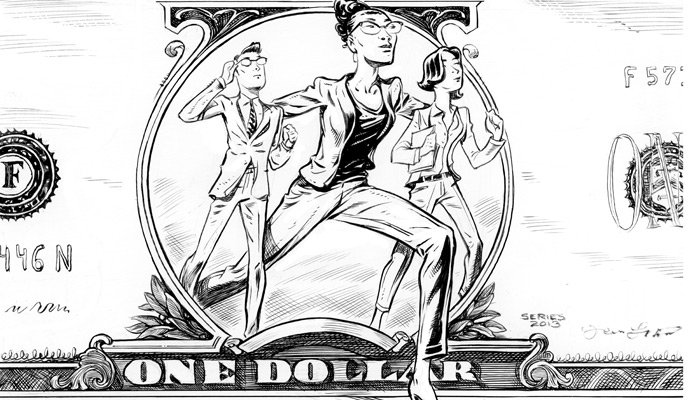Hiring for Cultural Fit at the Top
C-level transitions can be difficult, especially when preserving a company’s character is critical.
Bringing a new C-level executive on board is always fraught with risk: Any misstep can be expensive and embarrassing. As a result, companies may play it safe by looking for someone with just the right CV or perhaps a recent stint at a high-flying competitor. Who does the board like? What will the analysts think?
The challenge has become even more daunting as an increasing number of companies use their culture as a point of differentiation and strategic advantage. Look, for example, at the companies that have embraced the concept of “creating shared value” or “conscious capitalism.” These “higher ambition” firms pursue a stakeholder-centric approach to business, which makes it difficult to find a stellar candidate to fill a top role. The right person must possess industry credentials and embrace a fundamentally different conception of the role of business in society.
Brian Sullivan, CEO of executive search firm CTPartners, says each company should start by making sure its culture is what the firm has been saying it is. Such a determination, he adds, can tell you if you are looking for a culture steward or a culture catalyst. “Get granular and make [candidates for executive positions] give you examples,” he tells me. “For example, ‘We negotiate hard but we know our suppliers need to make a living, too. We’ll share some pain in order to build loyalty and commitment.’” At Sullivan’s own firm, he says, “We get the CEO or the CHRO to articulate the culture and defend it. We also speak with analysts and others who know the competitive space and who will be honest. This way you can determine whether the culture is really 80 percent of where the company wants it to be, or just 40 percent.”
Be certain that your culture is what you’ve been saying it is.
If the picture of the culture is clear, the next test is to see if a candidate truly embraces it. As CEO of United Stationers, Dick Gochnauer led a significant strategic shift at the business supply wholesaler as it faced tough challenges in a segment with shrinking margins and increased competition from private label suppliers to its largest customers. It was articulated as “winning from the middle of the supply chain” by enabling the success of suppliers, customers, associates, and the communities in which the company operates. Key to that strategy was the United Stationers Foundation, which allowed many stakeholders to participate in activities that were relevant to the business while uniting “hearts, heads, and hands” in charitable endeavors, like supplying backpacks full of school supplies to underprivileged children.
When Gochnauer was ready to retire, he and the board wanted to be sure that the next CEO would continue to build on this strategy centered on trust-based relationships and mutual success of stakeholders. “Clearly, cultural fit was a central part of my thinking and part of the board’s evaluation of the candidates,” he told me. While no candidate had everything they were looking for, Gochnauer says, company executive Cody Phipps was the most ready to take over. Phipps had been hired several years earlier with the understanding that they saw him as a potential CEO. However, they were less certain about his soft skills, which are essential to a culture centered on purpose. “He understood it intellectually,” Gochnauer said, “but we weren’t sure that it was etched in his heart.”
Gochnauer arranged for Phipps to be part of the foundation’s first international mission, where he could be part of the direct interaction between associates and the beneficiaries of its efforts. “Not everyone has had a transformative experience of giving back. Cody had one on this trip,” Gochnauer said. “And, because the participants chronicled their activities on Facebook, the company saw Cody go through that transformation. When he got back, he and everyone in the company knew that he had internalized our culture.” Phipps took the helm in 2011 and Gochnauer said that the culture continues to thrive under his leadership.
Grooming internal candidates is one way to work toward cultural fit, but at times you have to go outside. Nancy Schlichting led a turnaround as CEO of the Henry Ford Health System in Detroit, MI. As her retirement approached, Schlichting wanted to make sure that she and the board “got it right.” She explained to me that, rather than use a search firm to vet candidates, she looked for potential successors in her national travels, someone who could continue to carry on the 100-year-old legacy of the highly regarded health system. “I lead through culture,” she explained. “It is a balance of strategy and touch. When looking for the next CEO, we had to find someone who both had the intellectual capability and who could lead with a heart.”
Choosing someone from outside of the health system was a tough call according to Schlichting because “Detroit is not for the faint of heart. There is a lot of transformation ahead.” They chose Wright Lassiter, then the CEO of Alameda Health System in Oakland, Calif. “Wright had led a difficult transformation at Alameda and demonstrated a deep commitment to community. Those were critical factors for us.”
Lassiter started at Henry Ford in December as president, and Schlichting will continue as CEO for two more years. “Those two years will give Wright time to learn the organization. It is a complex system. He’ll be highly accountable during that time and we’ve all agreed that if he’s ready sooner than two years, I’ll step aside. I’ll be working to stay out of the way and let him lead.”
According to Kelvin Thompson, founder and CEO of executive search firm MontaRosa, two things distinguish these two cases: the involvement of the outgoing CEO and cultural understanding at the board level. “Boards tend to know the business, but they don’t always grasp the nuances of the culture. They can make the mistake of framing the search only with standard criteria or looking for a carbon copy of the departing executive. We always make a point of introducing an ‘out-of-the-box’ candidate as a way of stimulating and challenging the board’s thinking.”
Strategies can be copied; corporate cultures are much more difficult to duplicate. As more firms embrace their values and philosophy as a point of differentiation and driver of performance, agile management of the cultural elements of executive transitions will be increasingly important.





